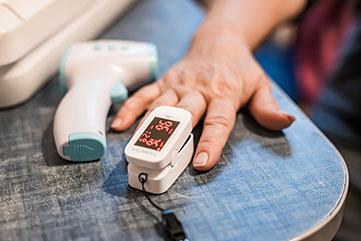Colossal Fail – ET3!
By Chuck Humphrey, B.A., EMT-B, CAC, CACO, CADS, *
 What Happened?
What Happened?
When the Centers for Medicare and Medicaid Services (CMS) announced the Emergency Triage, Treat, and Transport (ET3) Model as a nationwide demonstration program, I was excited.
When speaking with my colleagues in the EMS industry, I gushed how I was thrilled that finally “the Feds” had gotten something right. I glowed about how this would be the next BIG THING in EMS. Finally, we could show CMS, Congress, The White House and frankly, the world, that EMS is more than the horrible “ambulance driver” tag that we have all worn since the beginning of time.
This was our change, in EMS, to become healthcare providers just like everyone else in the healthcare loop.
But…. STOP!
What happened?
Well…COVID happened and it delayed the implementation. And then the wheels fell off the bus and everyone became so caught up in whatever it was that they were caught up in and just a few weeks ago CM abruptly announced that the model will self-destruct, ending at 23:59 hours on December 31st. That’s TWO FULL YEARS prior to the demonstration period end date!
Happy New Year…. NOT!
What was it to be?
You’ll recall that the ET3 model was a trial. Just shy of about 200 EMS organizations across the country applied for the right to participate in the model. While there were complications in how it all rolled out, basically the program was to measure two things…
- Can EMS be an active participant in Treatment in Place (TIP) when after responding to a 911 emergency dispatch, it is found that the patient really can be treated adequately where they are, ridding the need for additional costs for ambulance transportation with the accompanying emergency department (ED) charges. We all got used, by force, to telehealth and with technology rapidly expanding…why not?
- Are some patients able to be better treated in an alternative location other than an ED- such as an urgent care center, medical clinic or even a behavioral health center.
After a prescribed period, these circa-200 organizations were to submit data to CMS which in-turn would report up to Congress for a review of how many potential dollars can be saved, and fewer crowded EDs could be realized if the demonstration program became a full-fledged major change to the Medicare payment system involving EMS.
Sounds like a win-win, right?
And then…OOPS!
And then…well, the EMS participants seemed to miss the mark. Only a handful of those participants actually participated. At least that’s what CMS said. In their minds, the program just sucked up too much time and resources to continue it. Basically, the Feds said something to the effect that they had better things to do with their time.
You know…that upsets me as an EMS field provider.
This was our chance to prove that we aren’t just “stretcher fetchers.” We don’t just “You call, we haul” like we did in the seventies and eighties. We treat people!
But in order to be paid, which is important, we must transport the patient from point to point. This was our chance to show the Feds that we can do more, save the Medicare program money and still give the patient the care they need…without the transport or at least with a lower acuity transport to a location that doesn’t cost them so much.
But we dropped the ball. And why?
Well, I think I know why. We got lazy. Field providers didn’t like the technology that was needed to securely connect for telehealth. The decision-making process of who needed to be transported to an ED versus to an alternate destination was troublesome in the world of “it’s easier just to transport to an ED.” We didn’t make good SOPs to cover this, we didn’t plan accordingly, and we didn’t execute.
Opportunity lost!
The Feds are to Blame Too…
It’s not all on us, however. I have a mountain of personal blame to heap on the Feds. Of course, the new Administration in The White House had different initiatives than the last Administration.
COVID caused a pause and suddenly the world turned upside down for the bureaucrats, which it appears just lost interest in the program because they weren’t seeing the side participation, they had hoped they would see.
And frankly, isn’t it too easy to just do things as they have always been done? Why, heaven forbid, do we have to devise a new fee schedule for this new ET3 thing. Plus, in my opinion, while politicians give lip service to their fears about the EMS systems fracture points; I have yet to find a real initiative in Washington or at the state and/or local level that really wants to fix the payment system.
Heck, why would we want to save money for a government program? Seriously! Heck, who cares about the lowly EMS industry which really has but one effective national lobby organization (the American Ambulance Association) and is literally a drop in the over Medicare expenditure bucket anyway.
In short, there aren’t enough loud voices calling out the folks that need to be called out.
And thus, while we are all gathered around the big falling ball in NYC’s Times Square, ET3 will die and be buried.
What a shame!
Will anyone care? I’d bank on there being about as much luck with that as the long-term success of the myriad of New Year’s Resolutions that will be made at the foot of that ball.
But we shall see.
*Chuck Humphrey is an independent contractor who spent 25 years in the EMS revenue cycle management industry, prior to his retirement from Quick Med Claims. In addition to holding active EMT credentials in Pennsylvania, he is also a Certified Ambulance Coder, Certified Ambulance Compliance Officer, and Certified Ambulance Documentation Specialist via the National Academy of Ambulance Compliance. Humphrey is a periodic guest contributor to the QMC blog and podcast space.